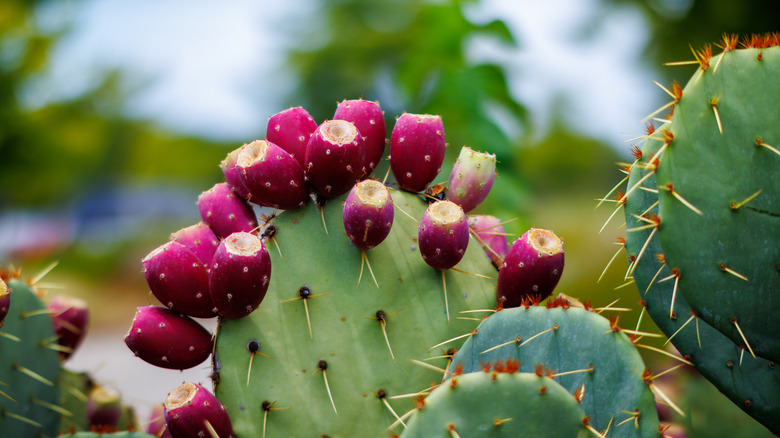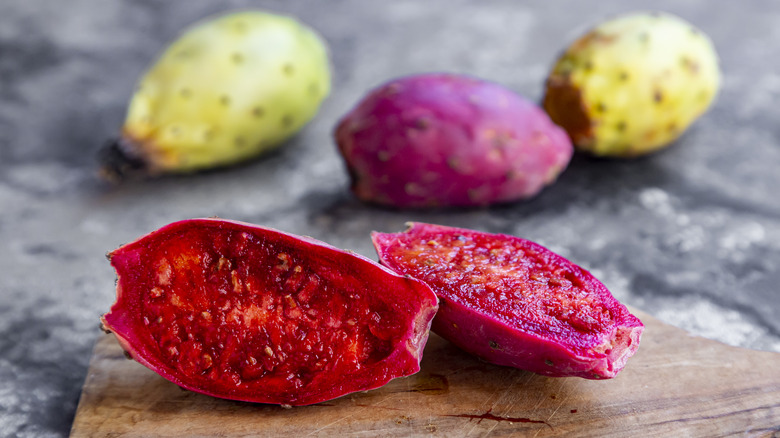Here's How To Properly Cut Prickly Pear
Some fruits can be challenging to cut and separate efficiently – opening up a pomegranate can lead to a big mess, and pineapples are a lot of work to slice. Others, like the prickly pears, are intimidating to handle. If not handled correctly, you may end up with spikes in your hand! Don't let the thorny exterior deter you — the fruit has a delicious interior that is worth getting to with the right technique.
Prickly pears, also called tunas in Spanish, are produced by what is called the prickly pear cactus, part of the Opuntia genus. Native to Mexico, the bright purple-pink, orange, or green fruits grow abundantly and can be easily spotted on cacti throughout southern California, Arizona, New Mexico, and Nevada. Like nopales, the edible cactus paddle, the spines surrounding the entire fruit must be removed before it's cut open and eaten.
If harvesting yourself, take the utmost caution when handling. Sometimes the spines, which are called glochids, and naked to the human eye; the easiest way to remove them is with fire. The fruit can be speared with a rod or fork, or gripped with tongs, and then twirled over an open flame. Be careful not to burn the skin — the small spikes will make small popping noises as they begin to burn off. The highest concentration of spines is located at the ends of the fruit, so be sure to hit these areas with fire well.
What to do after removing the prickly pear spines
Now, the difficult part is over. After burning off the spines, give the fruits a gentle spray with water to rinse off any possible pokey remnants. The prickly pears should be fine to handle now, but if your nervousness remains, feel free to wear gloves for the rest of the process; if you get the near-invisible spines in your hand, it's best to remove them with a piece of tape or with tweezers.
The next task is to remove the thick skins — start by slicing off the ends with a sharp knife. With the knife, make a lengthwise slit in the skin, reaching from end to end. The cut should not be so deep, only piercing through the skin layer. Using your fingers or a spoon, reach into the cut and start to lift the skin away from the inner flesh. Peel all the skin off — and the remaining pear-shaped fruit is ready to be eaten.
The beautiful vibrant flesh — whether it be purple, orange, or green – tastes similar to sweet watermelon, with some hints of kiwi. Purple tends to be the sweetest of all the colors. The fruit can be eaten raw, as is; the hard seeds are edible, but difficult to chew. It's fine to swallow them, but if these are bothersome, the fruit can be blended and strained to separate the seeds. Prickly pear juice tastes amazing to sip on solo, or it makes for an incredible margarita.

